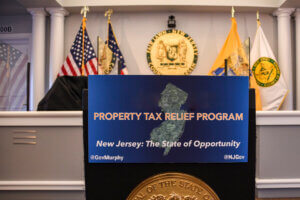As New Jersey marks the second anniversary of Superstorm Sandy’s landfall, a new Monmouth University Poll finds a large majority of the state’s hardest hit residents continue to be dissatisfied with the recovery effort and feel as if they have been forgotten. Overall, the state receives poor marks for its communication with respondents in the survey, particularly around recovery assistance programs like RREM. These latest results come from a follow-up survey that tracked the experiences of those most impacted by Sandy in New Jersey.
Specifically, just 1-in-3 hard-hit residents who have participated in the panel study over the past year are satisfied with the state’s recovery effort to date, including just 6% who are very satisfied and 27% who are somewhat satisfied. This compares to 28% who are somewhat dissatisfied and 38% who are very dissatisfied. These results represent almost no change from how these same residents viewed the state’s recovery effort last year when 36% were satisfied and 65% were dissatisfied. Only 29% of participants say the state’s recovery effort is focused on helping people like them, while 71% feel like they have been forgotten. This result represents only a slight improvement from last year when just 22% felt the recovery effort was focused on them.
“As far as New Jerseyans who were most impacted by the storm are concerned, the state’s Sandy recovery effort has been stuck in neutral,” said Patrick Murray, director of the Monmouth University Polling Institute.
There has been little change in satisfaction among those who are still displaced from last year (22%) to this year (25%). Interestingly, those who are living in their pre-Sandy homes have become slightly less satisfied with the state’s recovery efforts now (38%) than they were a year after the storm (44%). Among the small group of respondents who have been able to return home just in the past year, only 34% are satisfied with the state’s recovery efforts. Moreover, this finding is not much better than a year ago when these individuals were still displaced and just 26% were satisfied with the state’s efforts.
There is no official estimate of how many New Jersey families remain displaced. The survey results suggest that this number is still high and that only a small number have made it back into their homes over the past year. Specifically, among survey participants who were waiting to return to their homes when Monmouth spoke with them last year, just 28% have been able to move back, while two-thirds (67%) are still displaced and another 6% say they will never return to their damaged homes. Overall, half (52%) of the study respondents were back in their homes within a year of the storm and another 10% returned home in the past year, leaving 4-in-10 who are still displaced and waiting to move back (27%) or have been permanently displaced by Sandy (12%).
Residents who have finished rebuilding their Sandy-damaged homes (49%) represent the only group that gets close to a majority level of satisfaction this year – and even that number is down slightly from the 56% of this group that was satisfied a year ago. One-third (35%) of those who have started to rebuild their homes are satisfied and just 17% of those who have yet to begin are satisfied. Satisfaction levels for these two groups are practically identical to one year ago.
In a related finding, residents who have been denied for RREM rebuilding assistance from the state (21%) are less likely to be satisfied with New Jersey’s recovery efforts when compared with those who either have been approved for aid (38%) or did not apply (40%). Satisfaction levels among those who have been approved for RREM ticked up by 5 points since last year, while satisfaction has declined slightly among those who have either been denied (down 3 points) or did not apply (down 7 points).
Satisfaction with New Jersey’s Sandy recovery effort | ||
| Year 1 | Year 2 |
All Survey Participants | 36% | 33% |
by DISPLACEMENT STATUS |
|
|
Still displaced | 22% | 25% |
Back in pre-Sandy home | 44% | 38% |
Moved back past year | 26% | 34% |
by RREM ASSISTANCE |
|
|
Approved for RREM | 33% | 38% |
Denied RREM aid | 25% | 21% |
Did not apply | 47% | 40% |
by REBUILDING STATUS |
| |
Finished | 56% | 49% |
|
Started | 35% | 35% |
Have not begun | 18% | 17% |
by REGION |
|
|
Ocean County | 39% | 37% |
Monmouth Bayshore | 26% | 28% |
Monmouth Coast | 40% | 30% |
Other parts of New Jersey | 36% | 32% |
“Although these results cannot be used to represent the displacement status or experiences of all Sandy affected New Jersey residents, it is indicative of how slow the pace of recovery has been for the most severely impacted New Jersey residents,” said Tim Tracey, project director for Monmouth’s Sandy Recovery Survey.
One major issue in residents’ perceptions of the state’s recovery effort is the responsiveness of the reNew Jersey Stronger program which administers RREM and other financial assistance awards. Overall, the state receives poor marks for their communication with respondents in the survey. Nearly two years after the storm, just 36% say the program has done a good job keeping them informed about where they were in the process, while about 2-in-3 say the program did either a somewhat bad (28%) or a very bad (36%) job. Four-in-ten (41%) say they are satisfied with the responsiveness of the state’s recovery program while a majority (59%) are dissatisfied. A similar percentage say it has been easy (43%) to contact someone from the reNew Jersey Stronger program when they needed answers about their application, but more than half (57%) say it has been difficult.
Residents who were approved for RREM assistance (53%) are somewhat more likely to be satisfied with the program’s responsiveness compared with those who were denied RREM (26%), while those who were approved for HMGP assistance (34%) are not any more likely to be satisfied than those who were denied HMPG (35%). Residents who were denied RREM assistance were asked why they were not approved and 26% say they do not really know why and another 25% say it was because they were wait-listed. Among those who have been denied RREM assistance, just 39% say it has been easy to contact someone about their application. These results suggest that the program’s decision-making process may not be transparent or understandable for many residents.
“Getting stuck in the system without a clear understanding of the reason is one of the primary drivers of dissatisfaction with the recovery effort. Less than half of those who have applied for RREM say it has been easy to get in touch with someone at the program about their status,” said Murray.
The survey also found differences in satisfaction depending on where residents were in the RREM process after being approved. Just one-third (33%) in the preliminary stages (steps 1-4) are satisfied with the program’s responsiveness, compared to half (50%) of those who have been informed of their aid award amount (steps 5-8), and 81% of those who have started the construction process (steps 9-11). Half (48%) of those in the preliminary stages and 44% of those in the aid award stages say it has been easy to contact someone in the program for answers about their application, compared to 61% of those in the construction stages.
All survey participants were asked to rate the helpfulness of different levels of government nearly two years after the storm. Not much has changed on these metrics over the past year. Among the different levels of government, half (50%) of residents say their municipal government has been helpful to them, 48% say the federal government has been helpful, 45% say the state government has been helpful, and 28% say their county government has been helpful. These results are no more than 6 percentage points different from residents’ views of government helpfulness one year after the storm. Helpfulness ratings of non-government entities are higher, including family and friends (88%), neighbors (68%), community organizations (57%) and insurance companies (44%). The helpfulness ratings for family, neighbors, and insurers are nearly the same as a year ago while the community organization ratings are 7 points higher.
Not surprisingly, those who have been approved for RREM assistance (59%) view the state as more helpful than those who were not approved (41%) or those who didn’t apply (29%). RREM applicants are required to provide a letter from their local floodplain manager confirming the extent of damage to their home. Applicants who have already received this required letter (58%) are more likely to view their local government as helpful when compared to those have not (40%).
Helpful in Sandy Recovery | ||
Year 1 | Year 2 | |
Family and friends | 88% | 88% |
Neighbors | 72% | 68% |
Community organizations | 50% | 57% |
Local town government | 50% | 50% |
Federal government | 49% | 48% |
State government | 39% | 45% |
Insurance company | 43% | 44% |
County government | 23% | 28% |
|
|
| |
Two years after Sandy, 4-in-10 (39%) impacted residents say it has been at least somewhat easy to get recovery information from their local government and a similar 38% say it has been difficult, while nearly 1-in-4 (23%) say they receive no information from their municipality. Last year, 42% said it was easy, 46% said it was difficult, and just over 1-in-10 (12%) said they received no information.
Just over 1-in-4 (28%) impacted residents say it has been easy to get information from state government, while nearly twice as many (54%) say it has been difficult. Another 18% say they get no information from the state. These findings are similar to a year ago when 31% said it was easy, 55% said it was difficult, and 14% said they received no information from the state.
“With the exception of the state’s rebuilding assistance programs, impacted residents are starting to lose touch with other levels of government regarding the recovery effort, including officials in their own towns. This makes it more difficult for them to stay connected to their communities and remain aware of other support services that may be available to them,” said Murray.
Just 18% of survey participants say it has been easy to get information from their county government while 38% say it has been difficult and 44% say they get no information. Last year, 17% said it was easy, 45% said it was difficult, and 38% received no information from the county. About 3-in-10 (31%) say it has been easy to get information from the federal government while 48% say it has been difficult and 21% say they get no information from this level of government. Last year, 30% said it was easy, 56% said it was difficult, and 13% received no information. Almost 4-in-10 (38%) say it has been easy to get information from community organizations such as the Red Cross, 26% say it has been difficult, and 36% say they receive no information. Last year, a similar 37% said it was easy, 26% said it was difficult, and 38% said they received no information.
| Easy to Get Recovery Information | ||
| Year 1 | Year 2 |
Local town government | 42% | 39% |
| Community organizations | 37% | 38% |
Federal government | 30% | 31% |
State government | 31% | 28% |
County government | 17% | 18% |
About Monmouth University’s NJ Sandy Recovery Panel:
This release marks the sixth installment of findings from Monmouth University’s tracking panel of New Jersey residents who were hardest hit by Superstorm Sandy. Results from the first wave of the panel were released in October 2013, February 2014 and March 2014. Monmouth has also released five polls tracking statewide opinion of the recovery’s progress over the past two years as well as a separate survey of New Jersey coastal residents’ post-storm views of rebuilding policies. Monmouth University’s Polling Institute believes it has produced more research on post-Sandy public attitudes and behaviors than any other group in the country. Monmouth’s reports can be found at https://www.monmouth.edu/polling-institute .
Methodological Note:
The Monmouth University Polling Institute conducted the Sandy Recovery Survey online and by telephone with New Jersey residents who were displaced from their homes for a month or more or sustained $8,000 or more in damage to a primary home due to Superstorm Sandy. The results presented in this report were based on interviews completed between July and October 2014. This survey is part of a panel study designed to track the experiences of New Jersey residents who continue to be impacted by the storm. The initial survey was conducted between September 2013 and January 2014.
The results presented in this report comparing changes from Year 1 to Year 2 are for 630 New Jersey residents who participated in both the initial survey last year and this year’s follow up survey. The results reported for demographic sub-groups are among all 747 respondents who participated in this year’s survey. Because survey respondents were recruited using a variety of non-probability methods, the survey results cannot be statistically projected to the larger population of all Sandy victims in the state. The value of these survey findings rests in comparisons over time among the same group of residents to better understand individual-level recovery progress as well as for internal poll comparisons among different groups (e.g. variations between those who remain displaced and those who are now back in their homes, variations by income levels, etc.).
Survey Questions
1. Are you satisfied or dissatisfied with New Jersey’s Sandy recovery effort so far?
2. Which of the following best describes your feelings about New Jersey’s recovery effort?
[NOTE:Questions 3 through 5 were asked only of those who had applied for assistance with reNew Jersey Stronger (n=457). ]
3. How satisfied or dissatisfied are you with the responsiveness of the reNew Jersey Stronger program?
4. How good of a job did the state program do in keeping you informed about where you are in the process?
5. How easy has it been to contact someone when you need information or answers about your application?
6. How helpful have the following been in helping you recover from Sandy:
Your local town government?
Your county government?
The state government, including the reNew Jersey Stronger recovery program?
The federal government, including FEMA and the SBA?
Charity/community organizations, such as the Red Cross and churches?
Your family and friends?
Your neighbors?
Your insurance company?
7. How easy or difficult has it been to get information about recovery and rebuilding from each of the following sources over the past few months:
Your local town government?
Your county government?
The state government, including the reNew Jersey Stronger recovery program?
The federal government, including FEMA and the SBA?
Charity/community organizations, such as the Red Cross and churches?
Click on pdf file link below for full methodology and results by key demographic groups.




